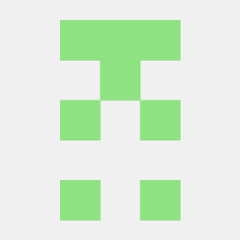Cordaptor
Cordaptor is an open source project designed to address the needs of teams building decentralized applications on Corda or integrating CorDapps with other systems. Corda is a great engine for decentralized applications, but in order to communicate with a Corda node, teams have to develop bespoke integrations using its Java client libraries. This comes with a steep learning curve, and adds complexity for for teams working outside Java ecosystem, e.g. Node.js, .Net, or Python.
Cordaptor solves this problem by automatically creating REST API for any CorDapp running on a Corda node. There are many tools that understand REST APIs in every technology stack, and teams can pick and choose what works for them. Cordaptor also allows to decouple API users from the underlying Corda node in order to improve the availability, reliability, and flexibility of the overall system.
Features
- Zero-configuration deployment option as an embedded Corda service -- great for development and integration testing
- Generation of OpenAPI 3 JSON spec for the API endpoint based on actual flows and contract state classes of available CorDapps
- Embedded Swagger UI for exploring the API in your browser
- Docker-friendly standalone deployment option configurable via environment variables and compatible with Kubernetes secrets management
- Synchronous or asynchronous execution of Corda flows via the API
- Comprehensive API for node vault queries
- Flexible API security based on PAC4J allowing such authorization models as API keys, OpenID Connect, SAML 2, or just about anything else -- great for integrating managed services like AWS Cognito
- Full support for SSL out of the box
- Extensible architecture allowing bespoke features to be added as simply as dropping a JAR file into a directory
Versions and artifacts
At the moment Cordaptor is a pre-1.0 technology preview made available to the community to gather feedback and identify areas for improvement. It is not considered production-ready yet.
Latest Cordaptor release is 0.1.0. You can download standalone bundle archive from the release page on GitHub. All Cordaptor modules are available in Maven Central. Embedded CorDapp bundle can be added using coordinates tech.b180.cordaptor:cordaptor-bundle-rest-embedded:0.1.0 ( see getting started guide)
Branch 0.1.x was created for bug fixes, and subsequent releases of the 0.1.x are going to be bugfix only. Snapshot versions of all artifacts (0.1-SNAPSHOT) are available from Sonatype OSS Snapshots Maven repository if you do not want to wait for the release. Published snapshot versions pass all automated tests.
All new functionality is developed in master branch, and the next milestone release is going to be 0.2.0. Snapshot versions of all artifacts (0.2-SNAPSHOT) are available from Sonatype OSS Snapshots Maven repository if you do not want to wait for the release. Published snapshot versions pass all automated tests.
Getting started
Cordaptor is designed from the ground up to be unobstructive, so there is no code or configuration required! Simply download the embedded CorDapp bundle JAR file from the latest release page and drop it into cordapps directory of your Corda node. Restart the node and fire up your browser to access the Swagger UI.
Read more in Getting started guide about other ways to get immediately productive with Cordaptor.
Next steps
- Learn how to get started with Cordaptor
- Learn more about using Cordaptor
- Read about how Cordaptor fits into your architecture
- Understand how to configure Cordaptor
- Learn how to create extensions for Cordaptor
- Stay tuned to updates in the development blog
Getting support
We offer community support for Cordaptor in #cordaptor channel on Cordaledger Slack. The development team members can often be seen hanging out there.
If something isn't working, feel free to file a bug report through GitHub Issues. Although, we ask you to search for related messages in the above Slack channel and among existing reported issues on GitHub first to avoid creating duplicates.
For bespoke feature development, custom integrations and extensions, or commercial support enquiries, please email to management@bond180.com.
Contributing
Cordaptor is an open-source project and contributions are welcome!
License
GNU Affero General Public License version 3 or later
SPDX:AGPL-3.0-or-later
Copyright (C) 2020 Bond180 Limited
Important notice: for the avoidance of doubt in the interpretation of the license terms, the copyright holders commit to treat the following uses of Cordaptor as 'aggregate' as opposed to 'modified versions':
- Deploying embedded Cordaptor bundle JAR file into a Corda node, regardless of whether it is a file distributed as a binary or built from the source code, as long as the source code of all modules in the bundle remains unmodified.
- Annotating application code with annotation types provided by Cordaptor in order to fine-tune the behaviour of Cordaptor components interacting with the application code.
- Creating extensions for Cordaptor using it's published microkernel's and modules' APIs, where the extensions' code is assembled into separate JAR files and made available for Cordaptor microkernel to dynamically discover at runtime. For clarity's sake, code constituting published APIs must be appropriately annotated, see Extending Cordaptor for further details.
- Including Cordaptor as a component of a broader application architecture where other components interact with it using network communication protocols regardless of how Cordaptor is deployed and configured.
The intent of using AGPL is to protect the interests of the Cordaptor user community and ensure any bug fixes and important new features developed by some users become available to everyone else. It is not the intent of using AGPL to force disclose of any proprietary application code relying on Cordaptor.
